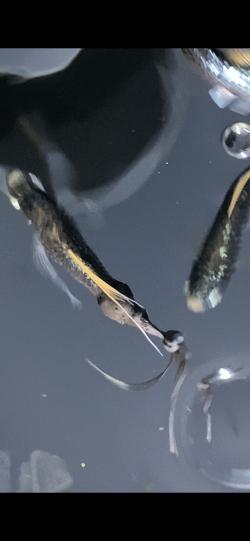Have a look around this site. It exists. in part,s because those spots make these fish critical for cancer research.
https://www.xiphophorus.txst.edu/
"The
Xiphophorus Genetic Stock Center (XSGC) was originally established in the early 1930’s by Dr. Myron Gordon at Cornell University following several collecting trips to Mexico and Central America. There, he collected fish to determine if
Xiphophorus from natural populations could develop pigment cell abnormalities or whether the observed melanoma was a consequence of hybridization between domesticated platyfish and swordtails....."
"
The
Xiphophorus Genetic Stock Center currently houses 24 of 26 species of the freshwater genus
Xiphophorus. In their natural environment, these fishes live in drainages in eastern Mexico, Guatemala, Belize and Honduras, with most of the described species living in Mexico. The taxa make up three groups: the Northern Swordtails, the Southern Swordtails, and the Platyfish.
The purpose of this site is to provide information to both the research community and the general public about the
Xiphophorus Genetic Stock Center. As a national resource for research animals, we welcome opportunities to share fish with the research community for further research, development, and application."
These fish are used in cancer research, They have lines that have existed for years and which have been bred such that the fish today are genetically identical to the ones they have provided for decades. In order for the research to be meaningful, it is import that the researchers are able to work with genetically identical fish. The pigmentation is the key.




